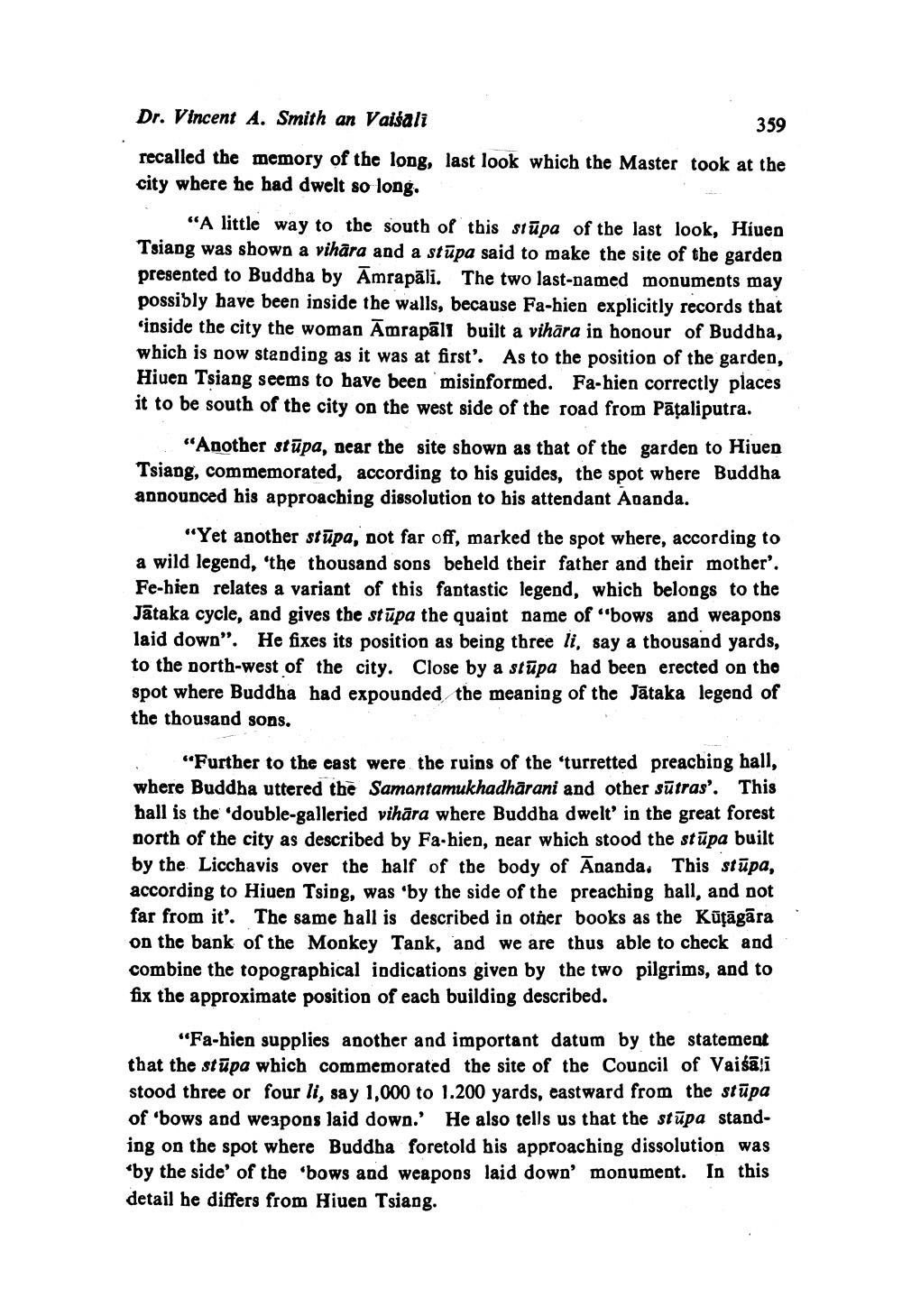________________ Dr. Vincent A. Smith an Vai ali 359 recalled the memory of the long, last look which the Master took at the city where he had dwelt so long, "A little way to the south of this stupa of the last look, Hiuen Tsiang was shown a vihara and a stupa said to make the site of the garden presented to Buddha by Amrapali. The two last-named monuments may possibly have been inside the walls, because Fa-hien explicitly records that 'inside the city the woman Amrapali built a vihara in honour of Buddha, which is now standing as it was at first'. As to the position of the garden, Hiuen Tsiang seems to have been misinformed. Fa-hien correctly places it to be south of the city on the west side of the road from Pataliputra. "Another stupa, near the site shown as that of the garden to Hiuen Tsiang, commemorated, according to his guides, the spot where Buddha announced his approaching dissolution to his attendant Avanda. "Yet another stupa, not far off, marked the spot where, according to a wild legend, 'the thousand sons beheld their father and their mother'. Fe-hien relates a variant of this fantastic legend, which belongs to the Jataka cycle, and gives the stupa the quaint name of "bows and weapons laid down". He fixes its position as being three li, say a thousand yards, to the north-west of the city. Close by a stupa had been erected on the spot where Buddha had expounded the meaning of the Jataka legend of the thousand sons. "Further to the east were the ruins of the 'turretted preacbing hall, where Buddha uttered the Samantamukhadharani and other sutras'. This hall is the double-galleried vihara where Buddha dwelt' in the great forest north of the city as described by Fa-bien, near which stood the stupa built by the Licchavis over the half of the body of Ananda. This stupa, according to Hiuen Tsing, was 'by the side of the preaching hall, and not far from it. The same ball is described in other books as the Kutagara on the bank of the Monkey Tank, and we are thus able to check and combine the topographical indications given by the two pilgrims, and to fix the approximate position of each building described. "Fa-hien supplies another and important datum by the statement that the stupa which commemorated the site of the Council of Vaisali stood three or four li, say 1,000 to 1.200 yards, eastward from the stupa of "bows and weapons laid down.' He also tells us that the stupa standing on the spot where Buddha foretold his approaching dissolution was *by the side of the bows and weapons laid down' monument. In this detail he differs from Hiuen Tsiang.




